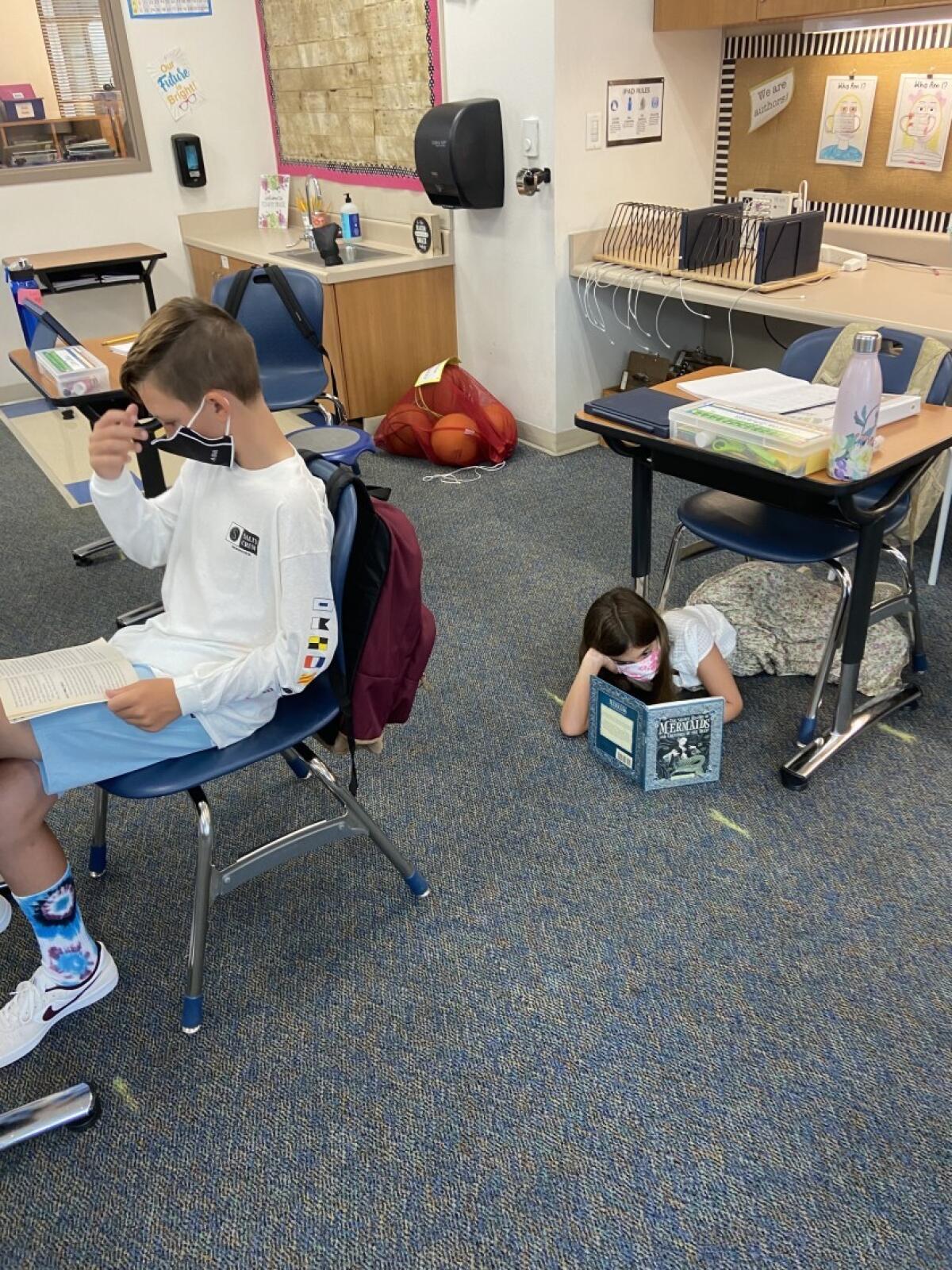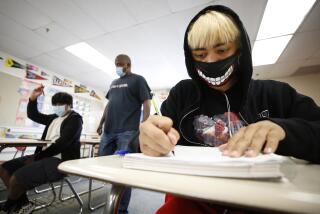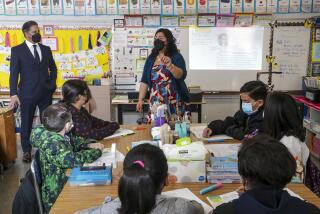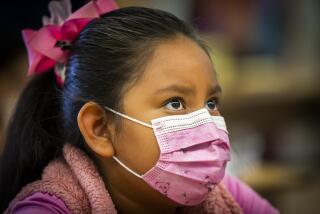Editorial: Full-time, in-person schooling: It’s where the science is heading

)
Hybrid schooling — part-time on campus, part-time remote — has been introduced in a number of school districts as an ostensibly safer alternative to full-time in-person instruction. One selling point is that it brings students into personal contact on a regular basis with their teachers, who can keep both their attention and their learning on track. But it can be disruptive to change educational modes every other day, or every afternoon, or whatever the schedule might dictate. It’s been hard as well on teachers, who are dealing with the problems both of remote learning and of keeping students safe in class.
This week, though, one of the main reasons for hybrid schedules might be falling by the wayside. Schools were allowing far fewer students in each classroom in order to follow the Centers for Disease Control and Prevention’s guidelines for safe distancing, which called for students to stay at least six feet apart. For many school districts, the reductions meant that students could attend classes in person only half of the time or less. But now the CDC is sending signals that it’s thinking of changing the recommended distance to three feet as long as everyone in the classroom is wearing a mask — which they should have been doing anyway, all along.
The state of California and school districts around the state should be paying heed and making plans for reopened schools with more normal class schedules. (California has set the minimum distance at 4 feet, still too far apart to allow full classrooms.) And an order issued this week by a Superior Court judge in San Diego County could pave the way for parents to push harder — via lawsuit if necessary — to get schools reopened.
As understanding of the novel coronavirus has grown more sophisticated, we now know that masks are generally more important than distance. They help keep virus-laden droplets in sneezes or coughs from landing on others; they also can reduce the aerosolized transmission of virus, which is particularly important indoors, where the infected air stays around unless there is top-notch air filtration.
If the CDC goes ahead with the new guidance it’s been hinting at — it’s reviewing the evidence right now — there would be little to no reason to not reopen schools full-time now, in the summer and in the fall.
More important than the three-foot rule, though, is what the CDC already has made clear: Teachers do not need to be fully vaccinated to return safely to school. Yet California has done almost nothing to force a quicker return to the classroom.
Instead, parents are pushing the pace. Acting on a lawsuit by a group of northern San Diego County families, Superior Court Judge Cynthia Freeland on Monday issued a temporary restraining order barring the state from enforcing the rules it set for when and how schools could reopen, pending the lawsuit’s resolution. Freeland held that the state’s rules are arbitrary and deprive students of the right to an education.
The order involved San Diego County school districts that wanted to reopen but were stopped by state rules; a hearing on the matter is scheduled for March 30. And ultimately, the state needs to have some flexibility to make the best calls it can make in uncertain epidemiological times. Still, it’s important that Freeland affirmed the right of California students to a quality education, which for most means an in-person education, assuming the science says it’s safe — and it does. Parents who want to force intransigent schools to open should take note.
More to Read
A cure for the common opinion
Get thought-provoking perspectives with our weekly newsletter.
You may occasionally receive promotional content from the Los Angeles Times.










